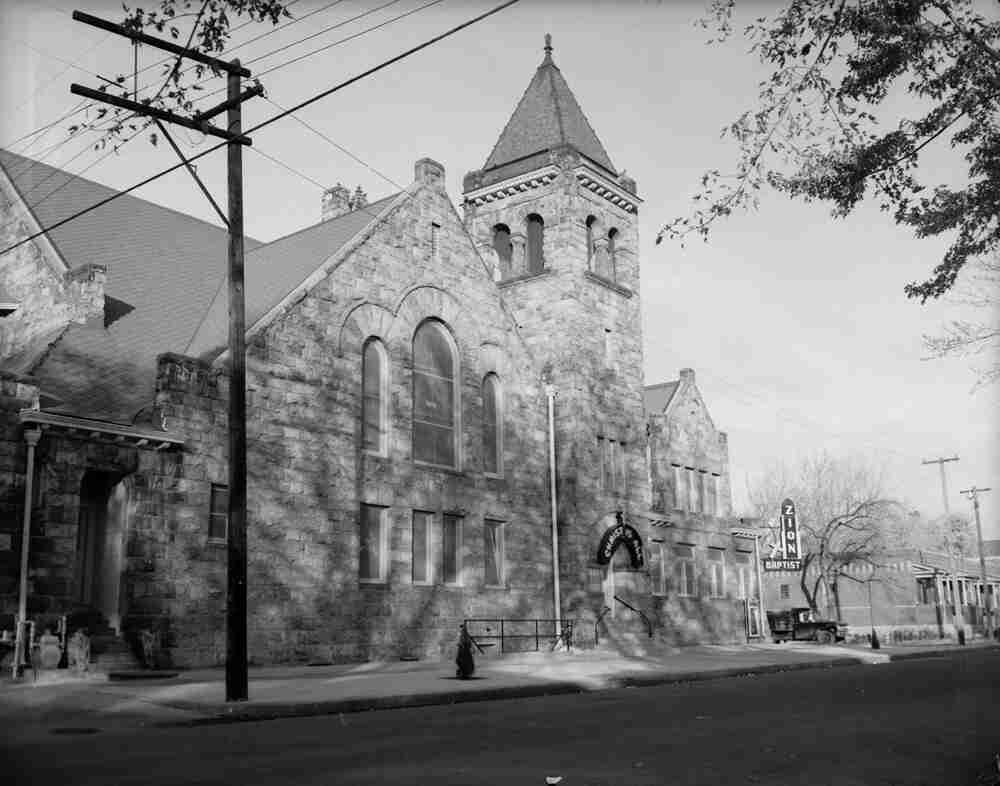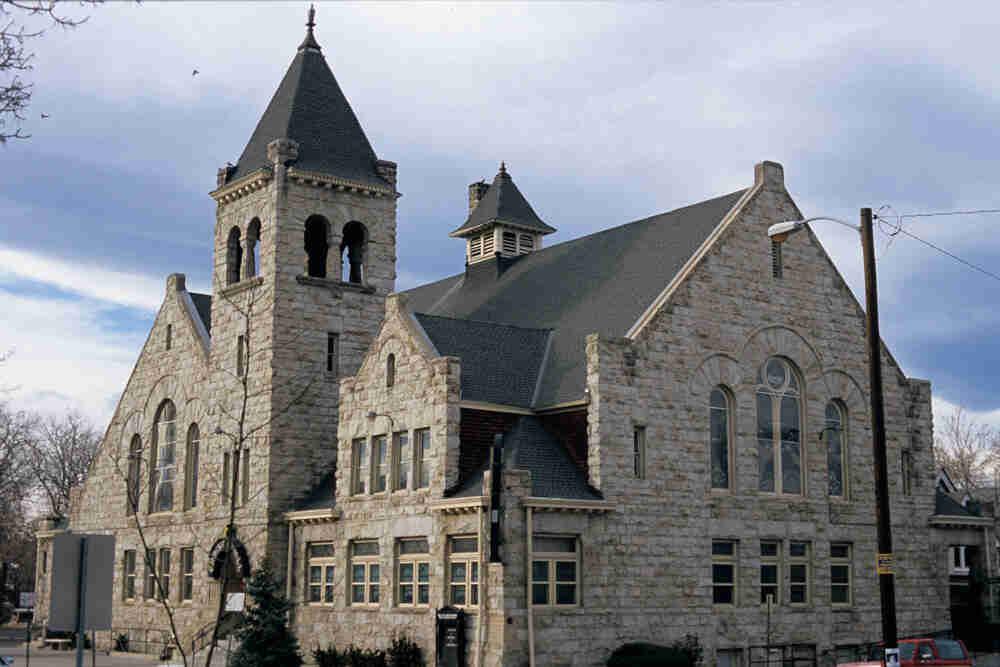Zion Baptist Church
Full Article
Organized by former slaves on November 15, 1865, Zion Baptist Church is the oldest black congregation in Colorado and the Rocky Mountain West. Since 1913, the church has occupied a large Romanesque Revival building at 933 East Ogden Street in Five Points, which was originally built in the early 1890s for Calvary Baptist Church. Long one of the central institutions in Denver’s black community, Zion Baptist celebrated its 150th anniversary in 2015.
Early Years
Zion Baptist Church was established by a small group of freedmen who gathered at the corner of Eighteenth and Market Streets in Denver. Some sources date the church’s origins as early as 1863, but the church itself recognizes November 15, 1865 as the date of its founding. In either case, it is the oldest primarily black congregation in Colorado, probably the oldest in the Rocky Mountain region, and one of the oldest west of the Mississippi River. The founders of Zion Baptist, led by the Reverend William Norrid, quickly acquired two lots at the corner of Twentieth and Arapahoe Streets, and in 1869 they built a small wood-frame church.
As Denver grew rapidly in the 1870s, Zion Baptist and its friendly rival, Shorter Community African Methodist Episcopal Church, became twin pillars of the local black community. Zion Baptist’s congregation expanded and included many of the city’s black business owners and politicians. To accommodate its growth and give itself a statelier building, in 1880 it replaced the original church on Arapahoe Street with a larger brick building at the same location.
Zion Baptist became known as the “mother church” of other black Baptist congregations in the West, many of which grew out of or were encouraged by the prominent Denver church. In 1891, for example, the church split under the Reverend W.P.T. Jones, who left with about thirty other members to establish Central Baptist Church.
New Building
By the early 1900s, when Justina Ford’s first husband, John Ford, served as pastor of Zion Baptist, Denver’s black population was starting to migrate northeast from downtown to the formerly white Five Points neighborhood. As Five Points changed and whites moved away, many white congregations in the area chose to follow their members to new neighborhoods elsewhere. Black congregations formerly located closer to downtown were sometimes able to move into Five Points by acquiring churches vacated by whites.
This was the case with Zion Baptist, which in 1911 acquired the building that Calvary Baptist Church was leaving at the northwest corner of East Twenty-Fourth Avenue and North Ogden Street. Designed by architects Frank H. Jackson and George F. Rivinius, the building was originally constructed in 1890–93. It was a rectangular Romanesque Revival church with a rusticated stone exterior and semicircular arched windows. A single tower above the main entrance rose more than four stories above the street.
 At its new location, Zion Baptist’s congregation grew to 1,000 members, and it solidified its status as one of the leading religious organizations in Denver. Although the church lost members and fell into debt in the early 1930s, it was rejuvenated by the Reverend William H. Young and his nephew, the Reverend Wendell T. Liggins, who served from 1941 to 1991. Liggins became a political force in the city, serving on boards for the Regional Transportation District and the Denver Public Library and occasionally as the chaplain for the Colorado General Assembly.
At its new location, Zion Baptist’s congregation grew to 1,000 members, and it solidified its status as one of the leading religious organizations in Denver. Although the church lost members and fell into debt in the early 1930s, it was rejuvenated by the Reverend William H. Young and his nephew, the Reverend Wendell T. Liggins, who served from 1941 to 1991. Liggins became a political force in the city, serving on boards for the Regional Transportation District and the Denver Public Library and occasionally as the chaplain for the Colorado General Assembly.
By the 1960s, Zion Baptist had grown to more than 2,000 members. With the end of racially restrictive housing covenants, Denver’s black community was spreading from Five Points to other parts of the city. The church considered moving and bought land in Northeast Park Hill for a new sanctuary and school. Ultimately, it decided to stay at its historic Five Points home, acquire nearby buildings for social and educational ministries, and use the Northeast Park Hill land for a seniors’ home called Liggins Tower.
Today
In 1969 Zion Baptist’s historic building was listed as a Denver landmark, and in 1986 it became part of the San Rafael National Historic District. A wide variety of civil rights activists have spoken at the church over the years, including A. Philip Randolph, Martin Luther King Jr., and Jesse Jackson. The church’s members include Denver’s first black mayor, Wellington Webb. The church maintains an active role in the local community and offers an array of social services and volunteer opportunities.
In 2015 the congregation celebrated its 150th anniversary and received congratulatory letters from President Barack Obama, Senator Michael Bennet, Governor John Hickenlooper, Mayor Michael Hancock, and a variety of other local political figures. Hancock issued a proclamation declaring November 2–8, 2015, as “Zion Baptist Church Week” in Denver.










